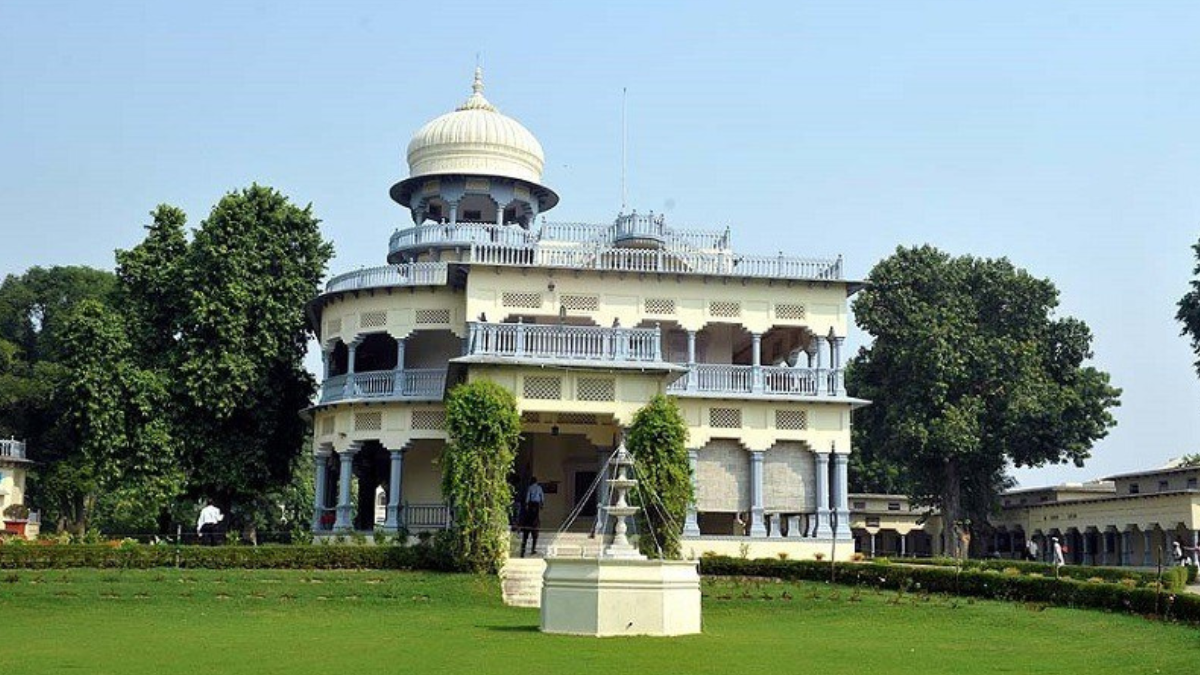Anand Bhavan is situated in the heart of Prayagraj, a city renowned for its cultural, historical, and religious significance. The exact address of Anand Bhavan is Civil Lines, Prayagraj, Uttar Pradesh, India. The building is easily accessible and is a major tourist attraction, drawing visitors from across the country and the world.
Where is Anand Bhavan Located?
Anand Bhavan is a historically significant building located in the city of Allahabad (now officially known as Prayagraj), in the northern Indian state of Uttar Pradesh. This iconic structure holds immense importance in the history of India’s struggle for independence from British colonial rule. It served as the ancestral home of the Nehru-Gandhi family, one of the most prominent political families in India, and was a hub for planning and organizing various movements during the freedom struggle.
Importance of Anand Bhavan in Indian History
A Symbol of India’s Freedom Struggle
Anand Bhavan is not just a building; it is a symbol of India’s long and arduous struggle for independence. The decisions and strategies formulated within its walls played a crucial role in shaping the course of the freedom movement. It was a place where leaders gathered to discuss and plan protests, boycotts, and other forms of resistance against British rule.
The Legacy of the Nehru-Gandhi Family
The Nehru-Gandhi family has been at the forefront of Indian politics for decades. Anand Bhavan stands as a testament to their contributions to the nation. The house is a reminder of the sacrifices made by the family and their unwavering commitment to the cause of Indian independence and nation-building.
A Center for Education and Inspiration
Today, Anand Bhavan serves as an educational center, inspiring future generations to learn about India’s history and the values of freedom, democracy, and secularism. The museum and library provide valuable resources for researchers, students, and history enthusiasts.
The Nehru-Gandhi Legacy- A Family That Shaped India
Anand Bhavan was originally built by Motilal Nehru, a prominent lawyer and an active participant in the Indian independence movement. Motilal Nehru was the father of Jawaharlal Nehru, who later became the first Prime Minister of independent India. The Nehru family played a pivotal role in shaping India’s political landscape, and Anand Bhavan served as their residence and a center for political activities.
In 1930, Motilal Nehru donated Anand Bhavan to the Indian National Congress, the leading political party during the independence movement. The building was renamed Swaraj Bhavan and was used as the party’s headquarters. It became a meeting place for prominent leaders like Mahatma Gandhi, Sardar Vallabhbhai Patel, and Subhas Chandra Bose, who strategized and planned various campaigns against British rule.
Anand Bhavan Museum- Preserving India’s Freedom Struggle
In 1970, Indira Gandhi converted Anand Bhavan into a museum to preserve the legacy of the Nehru family and the Indian independence movement. The museum houses a vast collection of memorabilia, including personal belongings of the Nehru family, letters, documents, and photographs. It also features a library with a rich collection of books on Indian history and politics.
Exhibits at the Museum
The museum showcases various exhibits that highlight key events in India’s freedom struggle. Some of the notable exhibits include:
- Personal belongings of the Nehru family: Clothes, books, and furniture used by the family.
- Photographs and documents: Rare photographs of important events and leaders during the independence movement.
- Artifacts: Items like spinning wheels (charkhas) used during the Non-Cooperation Movement and other campaigns.
Why Anand Bhavan is a Symbol of India’s Independence
Anand Bhavan is not just a building; it is a symbol of India’s long and arduous struggle for independence. The decisions and strategies formulated within its walls played a crucial role in shaping the course of the freedom movement. It was a place where leaders gathered to discuss and plan protests, boycotts, and other forms of resistance against British rule.



 Which Indian City is Known as the Footwe...
Which Indian City is Known as the Footwe...
 Which Desert is known as the Cold Desert...
Which Desert is known as the Cold Desert...
 Top-10 News Media Companies in the World...
Top-10 News Media Companies in the World...







